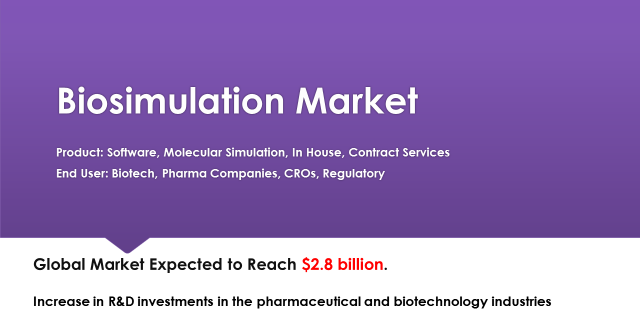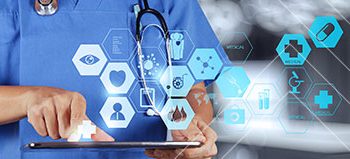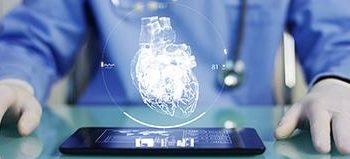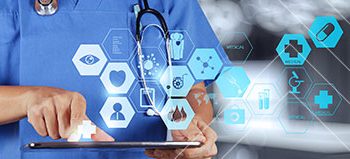
The
global biosimulation
market is projected to reach USD 2,881 billion by 2022 from USD 1,375
billion in 2017, at a CAGR of 15.9%. Factors such as increase in R&D
investments in the pharmaceutical and biotechnology industries, growing
adoption of biosimulation software by regulatory bodies, technologically
advanced QSP systems, need to curtail drug discovery and development costs, and
growth in the biologics and biosimilars markets are driving the growth of the
market.
Pharmaceutical and Biotechnology Companies
Segment to Record the Highest CAGR:Pharmaceutical and biotechnology companies are expected to form the largest
share in 2017, and is projected to register the highest CAGR during the
forecast period. Increased R&D budgets of pharmaceutical and biotechnology
companies and increasing adoption of inorganic growth strategies by different
biosimulation service providers are likely to boost the adoption of
biosimulation solutions in the pharmaceuticals and biotechnology industry.
Download PDF Brochure @https://www.marketsandmarkets.com/pdfdownloadNew.asp?id=838
Driver: Growth in the biologics and
biosimilar marketGrowth in the global biosimilars market is mainly driven by factors such as
the growing pressure to curtail healthcare expenditures, growing demand for
biosimilars due to their cost-effectiveness, rising incidence of various
diseases, increasing number of off-patented drugs, positive outcomes in ongoing
clinical trials, and rising demand for biosimilars in different therapeutic
applications such as rheumatoid arthritis and blood disorders. As there is very
little success in the R&D of new chemical entities, pharmaceutical
companies are trying to find new applications for their existing drugs. As toxicity
and other vital parameters of drug safety are already tested, biosimulation
technologies are used to confirm the hypothesis of using the drugs for a new
indication or disease.
Opportunity: Emerging applicationsThe emerging applications of biosimulation in defense, industrial
bioprocessing, nutraceuticals, and agri-food production present significant
opportunities for the growth of the global biosimulation market. Various
biosimulation companies are adopting inorganic and organic growth strategies to
expand the applications of their biosimulation software and services. In May
2017, the Institute of Life Science at Swansea University delivered an in
silico drug discovery software platform for the UK Ministry of Defense for the
development of antimicrobials to meet the needs of defense and security in the
country. Likewise, in April 2017, Certara formed a partnership with the
Australian Department of Defense. Certara’s d3 medicine company was selected to
conduct a national audit to check the research and development capabilities and
capacity of Australia’s medical countermeasures (MCM) product.
Request Sample Pages @https://www.marketsandmarkets.com/requestsampleNew.asp?id=838
Market Players:
Certara (US), Simulations Plus (US), Dassault
Systèmes (France), Schrödinger (US), ACD/Labs (Canada), Chemical Computing
Group (Canada), Physiomics (UK), Evidera (US), In silico biosciences (US),
INOSIM Software (Germany), Insilico Biotechnology (Germany), LeadInvent
Technologies (India), Rosa (US), Nuventra Pharma (US), and Genedata
(Switzerland).


